While visiting the Huaorani Lodge in Pastaza, we were invited to spend an afternoon in Apaika, a small village where the Huaorani still practice a traditional way of life.
Upon our arrival, we immediately noticed two children playing in the river by a makeshift dock, a sandy hillside where canoes could pull in while tourists like ourselves could hop in and out of dugout canoes. The children were full of smiles as their naked bodies tumbled on a half submerged log that looked more fun than any inflatable pool toy. They kept sneaking looks at us while we in turn snapped photos of them playing in the slow moving, muddy colored water.
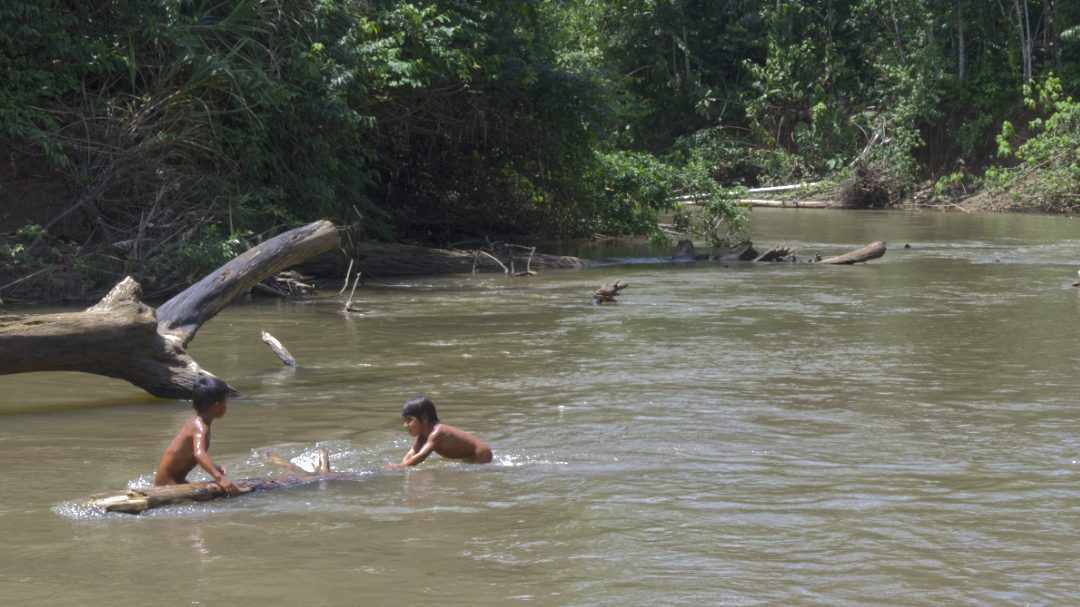
We gathered our gear and headed up the hillside to a short trail that led to the village itself. From the top of the hill, we looked down to see the village spread before us. We saw a couple of pitched roof buildings without walls, another more modern building that was about the size of a trailer, covered with a tin roof, painted in black and emblazoned with red letters that read Apaika, and a large garden protected by a small fence made from willow branches.
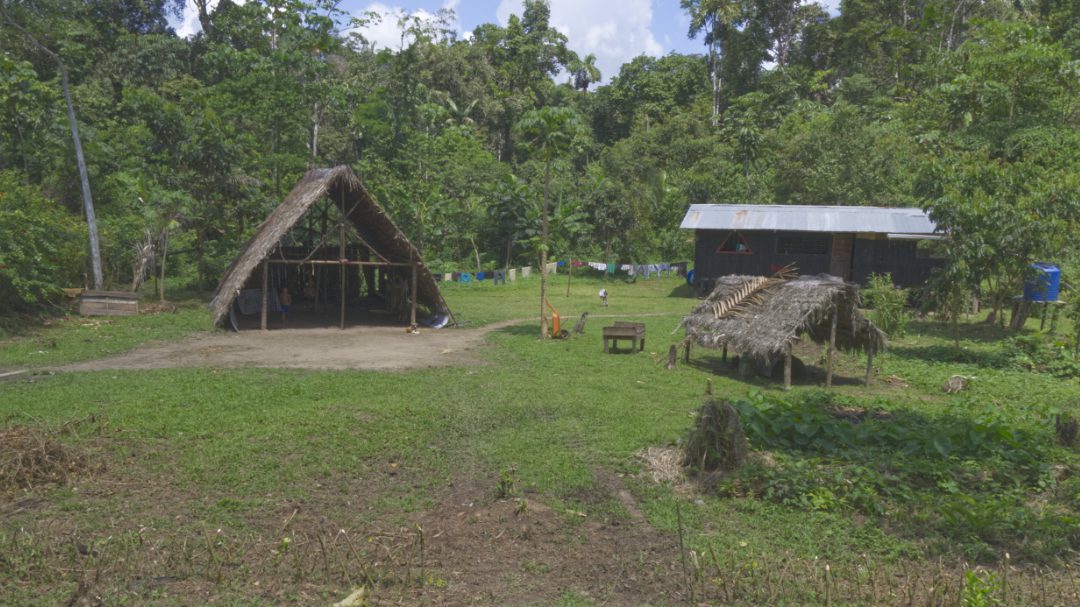
The place had the look of a well-cared for community; the green grass close cropped so that children could run around and play without fear of snakes, the laundry drying on a line in the back, and a wheel barrow propped up against a papaya tree waiting for the next garden job.
But this wasn’t your typical Western community. We watched as a young child, about three or four years old, took off around the building, naked except for a pair of mud boots and brandishing a machete like it was a flag.
My eyes were most likely wide with shock even though I had been reading a book by Jared Diamond about the differences in raising children between indigenous cultures and our own Western society. I should have been prepared to see what I might consider dangerous behavior but what they think is very normal. However, the shock was still there.
Waiting underneath the pitched roof of the largest structure were our welcome committee, a mixed age group of Huaorani in various modes of dress, mainly women and children, and a small monkey who ran back and forth along the support beam overhead.
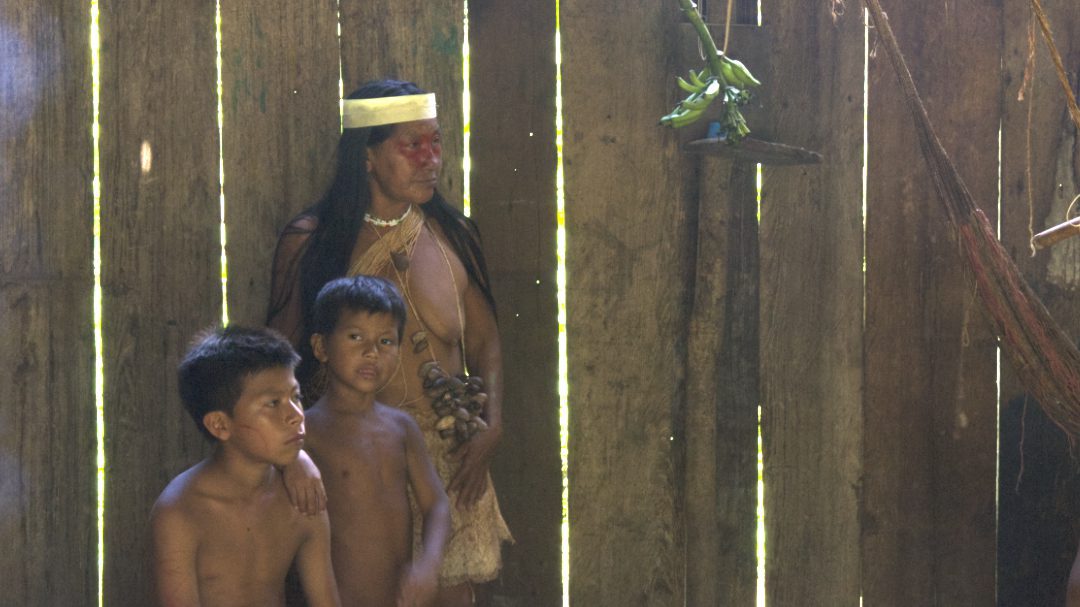
Some of the women were sitting near a very smokey fire, working on handicrafts to sell to tourists like ourselves. Others were prepared to welcome us to their home. Some were dressed in modern clothing, others wore items woven of local materials found in the jungle. But almost all wore a swath of bright red paint across their eyes. And that’s when we found out that we would be marked as well.
We female tourists were painted with a red mask across both eyes. However, the men received curved, red lines on both cheeks and a single red line running down the bridges of their noses.
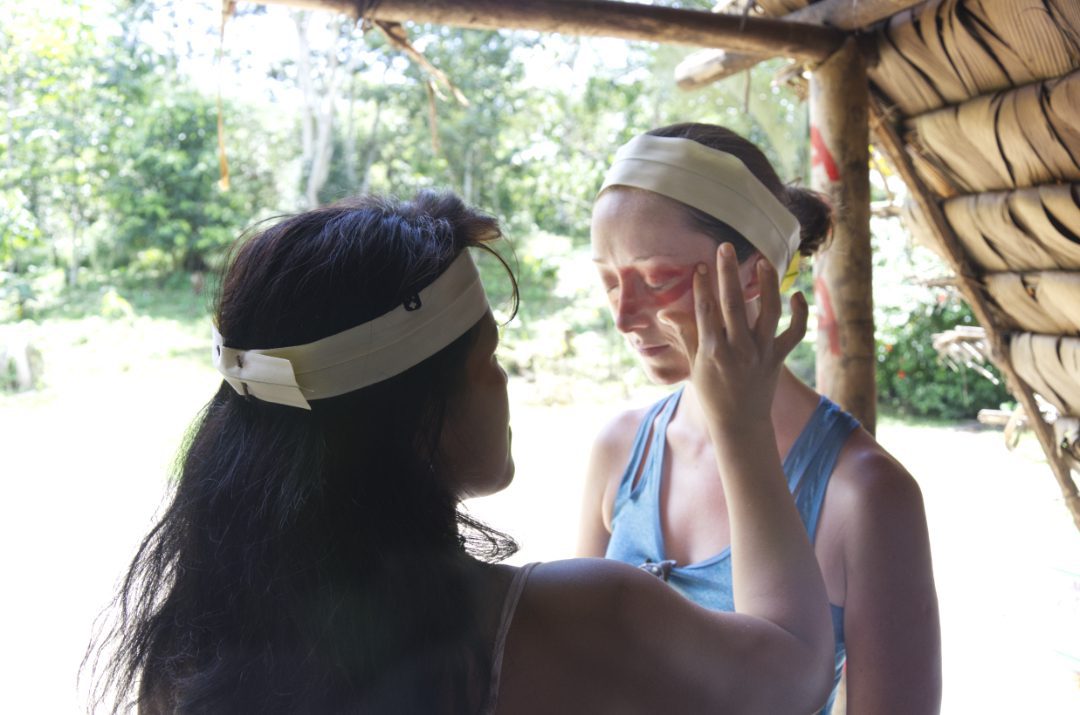
We learned the paint is made from the native achiote seed and the markings are traditional to the Huaorani.
We were also gifted crowns made from a local leaf and held together by thorns harvested from the jungle.
While all this was going on, we had an audience of children watching us, often giggling at our discomfort and then smiling wide when we all took pictures of each other decked out like the Huaorani themselves.
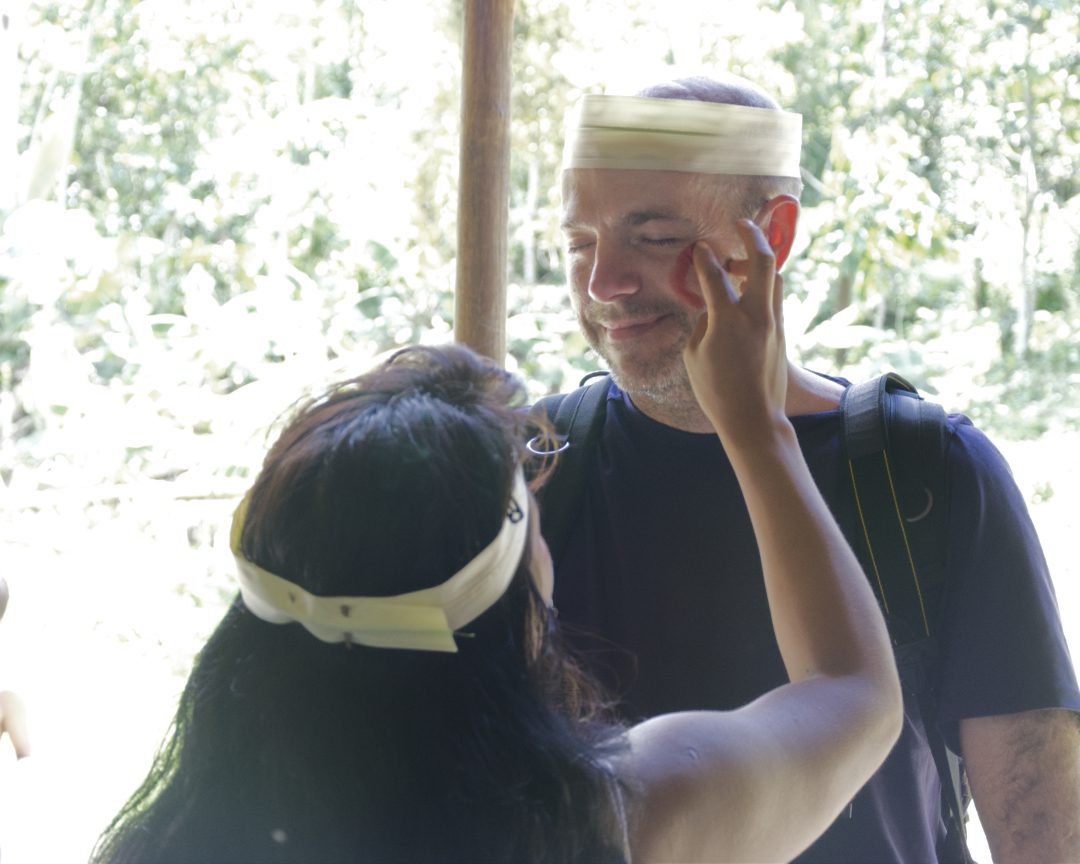
This cultural exchange was just the beginning but it set a tone that was very different from other learning opportunities I have experienced in Ecuador.
We weren’t there to just watch the local people but to share and participate in their traditions and culture. And that became very apparent when we female tourists were asked to join the other women in a dance before the men. I have to admit to feeling embarassed. I have never been one to enjoy the stage. And, here I was, being asked to perform. There was was an irony I didn’t understand at the time.
We held hands and made an attempt to sing, though without knowing the words, that was next to impossible. But the spirit of the moment made me smile and we all swayed back and forth together, dancing before the men.
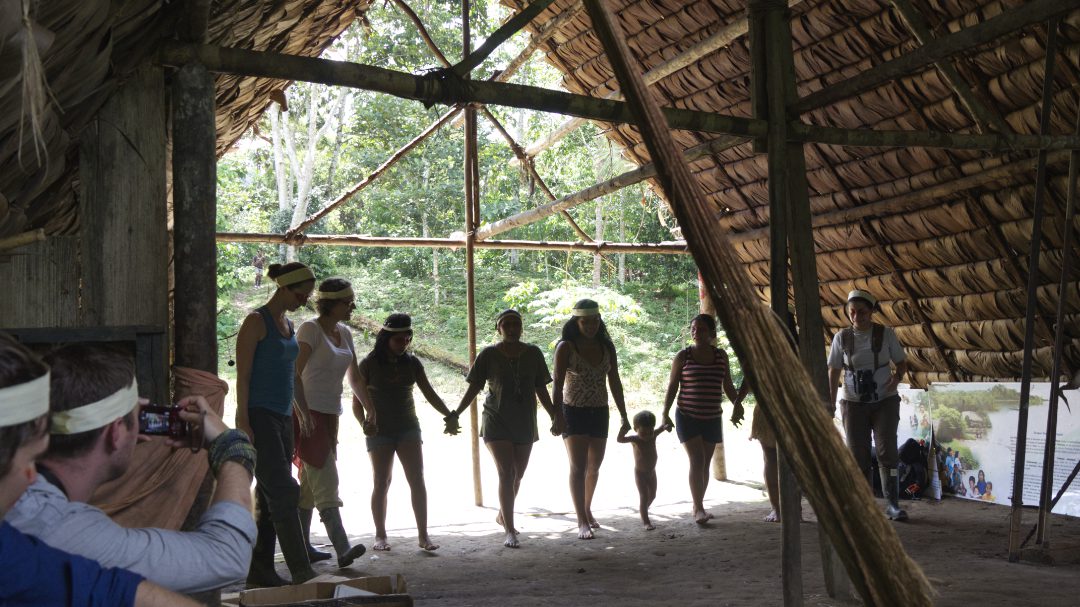
Then it was the turn of our male counterparts. They began by playing pipes. My two teenage sons gave themselves wholeheartedly to the experience, which isn’t always an easy thing to do.
When the men finished playing pipes, they started to dance in a circle. The speed and pace became increasingly frenetic and then, out of the blue, women started slapping red achiote paint on the cheeks of the dancers, marking out the guests for special consideration.
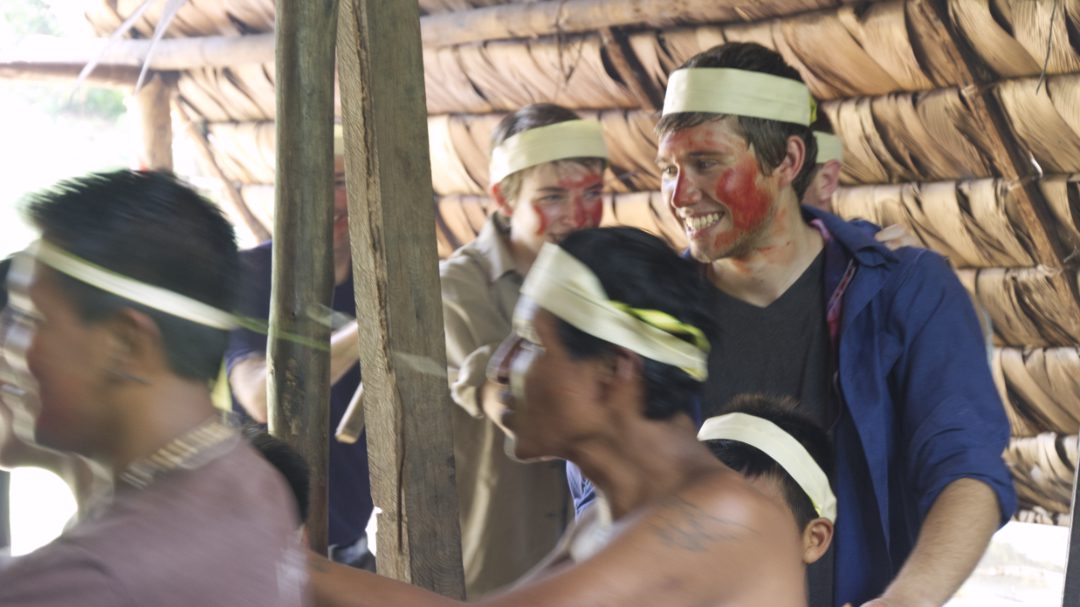
We learned that this is how women will let men know of their romantic interest. We also watched individual men come up to individual women and dance before them to let that special woman know of his interest in her.
Of course, like all good courtship rituals, this one had to end in a wedding.
The couple touring with us were newlyweds and were marked for special consideration. They were both treated to the full monty, extra paint slapping, extra wild dancing before them both, and finally they were told to sit down and be blessed in their union.
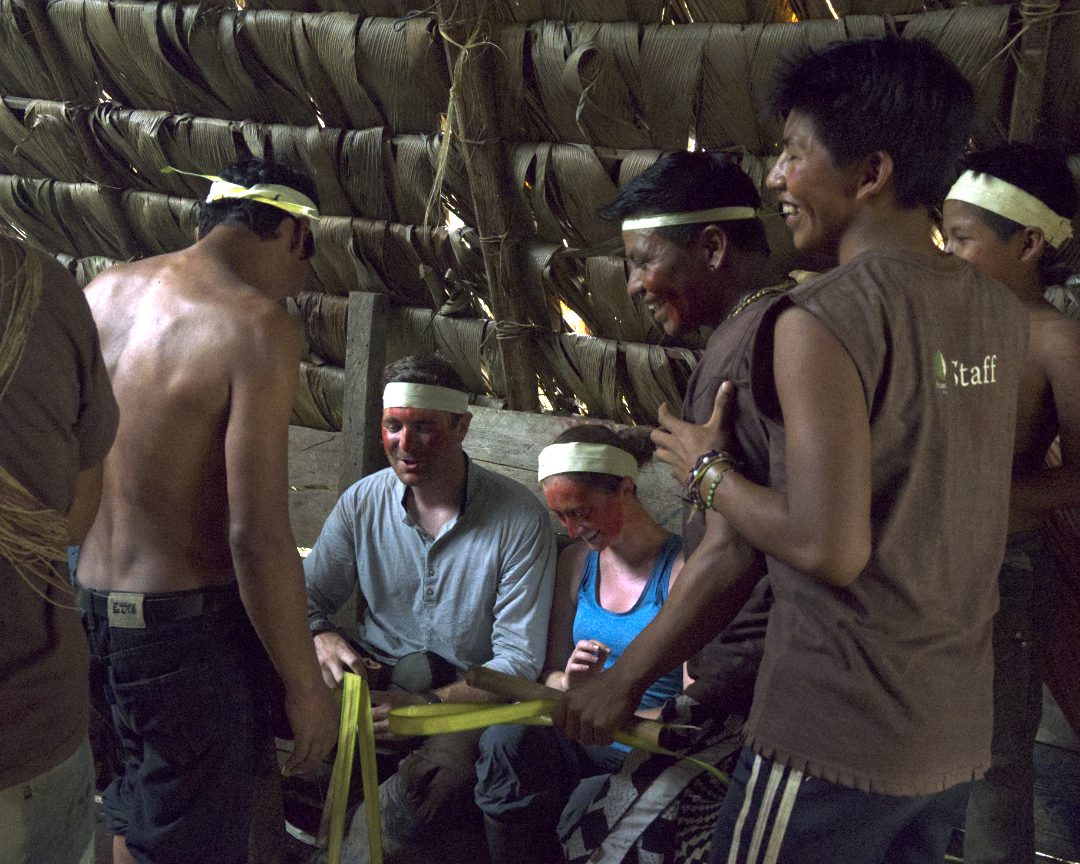
They participated with smiles on their faces, though I know that the moment was somewhat embarrassing for them both. We Westerners are often uncomfortable when placed in the tourism spotlight. Moments like these open our eyes not only to a new culture but to our own cultural reservations. It’s a learning experience different from any other I have known. We left happy and the people we visited seemed very happy as well.
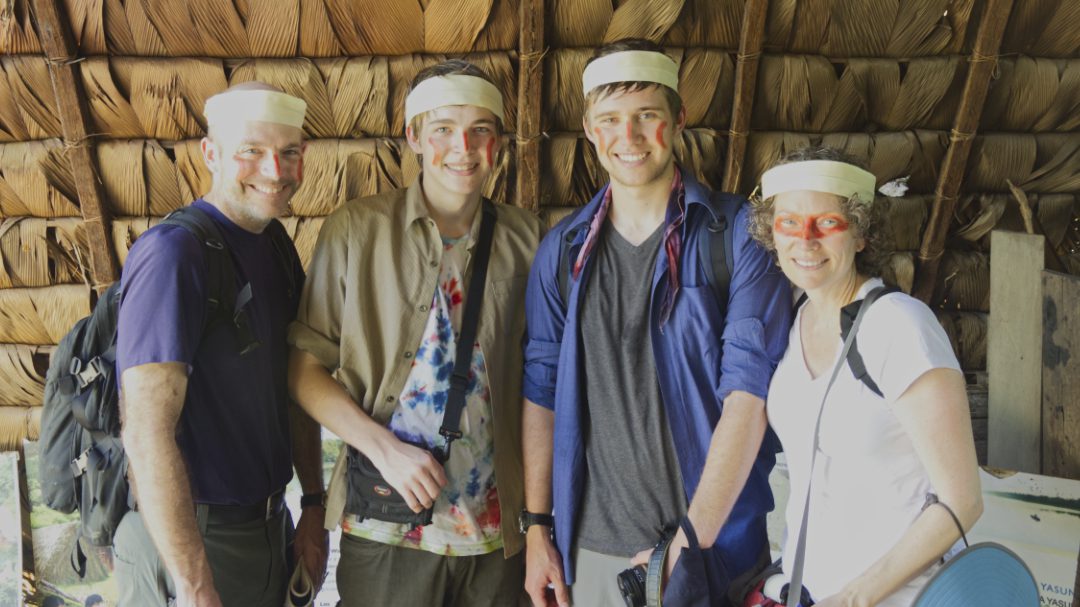
On our way out, we walked by the building with the roof and the black paint on its walls. We could see words painted on the front door:
Ome gampote Waemo, Kiwigi-Mamo
Salvando el Bosque Para vivir Sano
A simple translation would be – Saving the Forest to Live In Good Health.
At the end of the day, that’s what Apaika is all about, protecting their land in order to live well.
This article was originally published on December 4, 2014. It has been lightly edited and reformated.











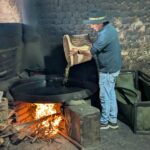


Angie, your posts are awesome; so informative and always interesting!
I’m so glad, Cathy! I love writing them and I love it even more when I know that others enjoy reading them! Thanks for stopping by and for leaving a comment. You brought a big smile to my face 🙂
The land of the Huaorani is well worth preserving. I hope the greater world community can help make that happen in the long run. Ecuador is struggling to make it happen in the short run.
Mornin’ AJ,
I well remember our visit with the Hauorani. When we learned their commitment to the forest, we opened our wallets! One place where our money was useless without them!